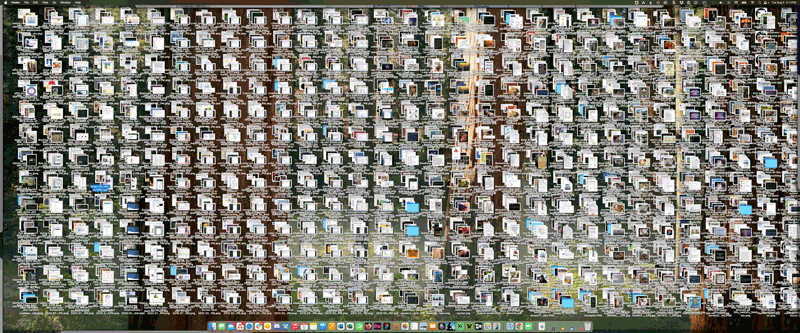When I was a kid, we still had desks in elementary school that you could store your stuff in. That’s where your textbook, pencils, erasers, and notebooks went unless you were using them. That’s also where, if you were a kid like me, everything else went — worksheets, notes to your parents, peanut shells, you name it.
Every once in a while the teachers would get it in their heads that they had to teach us to be neat and orderly, and they’d inspect everyone’s desks. Some kids passed inspection on the first try, little eight-year-old Frank Burns rule-followers. Some kids got told to put their papers in their trapper keepers. And the rest of us — maybe 1/4 of the class — had our desks dumped on the floor.
***
I often tell people I was fated to become an information architect because when I was four, my dad would give me a ball jar full of screws, nuts, etc. and a bunch of empty ball jars, and I would sit on the floor in the basement sorting the full jar’s detritus into the empty jars while dad worked on a project in the wood-shop half of the basement.
But being able to sort things when someone’s giving you the time and supplies (and doesn’t particularly care about the result) is very different from being able to clean up a mess of your own making under pressure. It’s harder to judge trash from treasure when the clock is ticking and you’re being publicly shamed for the mess.
In all my years as an IA I don’t think I was ever shamed or blamed for a bad architecture in front of my non-design peers. And I did have bad architectures, especially in the beginning. (This is why we don’t invite Product and Engineering to our design critiques!) But when you’re the kid who’s holding up the whole class because you stuffed everything you own, including pencil filings and eraser nubs, into your desk instead of putting them in your trapper keeper, well, you definitely feel that pressure.
General George S. Patton said “Pressure makes diamonds”, but he didn’t ask the coal how it felt about the process.
***
About a week ago I was going through some files on my personal laptop to find some medical documentation. I discovered that I had directory after directory named “clean this up later”. It turns out that over 30+ years of computer use, I’ve left duplicates of things all over the place. Sometimes medical insurance paperwork is under medical, sometimes it’s under insurance.
So, I dumped my own desk. Some information architecture problems are most easily solve with a content inventory. Sometimes the easiest way to do a content inventory is to put all the files in one place and then view the directory list.
I have, at current count, 1700+ files on my desktop. My husband says just looking at my desktop gives him anxiety every time he comes through the room.

The anxiety is what’s keeping me going.
Well, that and the exploration. The anxiety is what makes me sit down and go “this needs to be fixed” but the discovery of files I haven’t seen since high school is what keeps me going. (Turns out I was as godawful a poet at age 16 as everyone else is.) I’ve found tons of files that could or should have been part of my portfolio, and messages from friends long dead, and comic strips about Y2K.

It is both the hardest and easiest kind of information architecture to do. On one hand, it only needs to make sense to me. On the other hand, it needs to make sense to now-me and me in 30 years. And it needs to be scalable, but by how much I can’t predict.
But now that the desk has been flipped, I have no choice but to clean it up. And that means that, if nothing else, the “clean this up later” work finally gets done.
